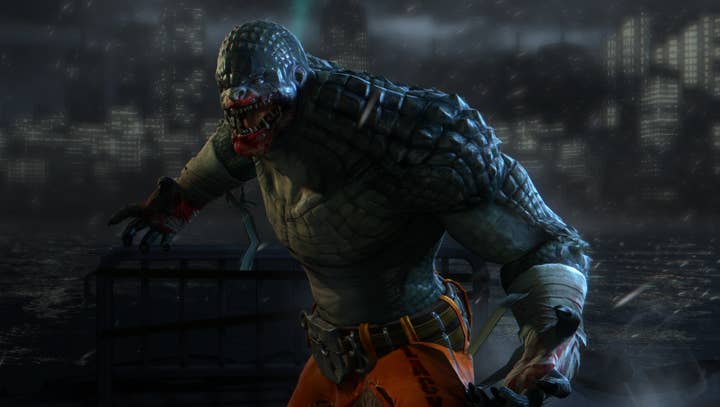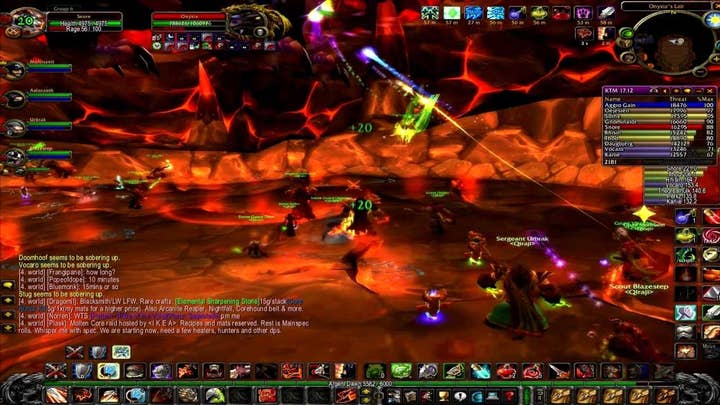Like a boss: The secrets behind great boss design
Jagex's Marie Mejerwall talks us through the most important factors when creating memorable encounters for players
Unlike their beastly centrepieces, boss fights simply won't die.
Battling beefed up baddies has been a staple in the games industry for decades, and while they might not be quite as prevalent as they once were, they still provide a satisfying challenge for players across most genres.
Even without traditional bosses, developers still throw in a particularly tough adversary for players to face when the situation calls for it.
"Games used to have more ebbs and flows, where you'd have calm periods and then a big boss would come," says Marie Mejerwall, senior game designer at Jagex. "Whereas nowadays it's a bit more of a sliding scale.

"For example, the Dead Rising franchise used psychos as a form of miniboss, and a lot of other games have more lieutenant-type enemies so there's a little progression and you get more variation -- you don't always need to go all the way to [boss-style challenges], you still get the intensity."
Breath of the Wild is another prime example. While the Zelda games is famed for its distinct bosses, the series' Switch debut veered away from this in favour of the hardened Lynels, Hinoxes and Taluses spread across the map.
Mejerwall continues: "But bosses still have their places in a lot of story games and RPGs. They have a purpose there, and a slightly different purpose in MMOs. They're not as prevalent in multiplayer games and the industry as a whole is moving a little bit more towards PvP. If you look at Twitch, the biggest games there are PvP games and it's the players that give you the challenge rather than the bosses or anything pertaining to the world."
Mejerwall has spent a good deal of her career working on boss design. She contributed to the creation of Batman: Arkham Origins' bosses, was feature owner for all boss fights on an unannounced Dead Rising game (that unfortunately won't see the light of day), and now works on a secret project at RuneScape developer Jagex.
"[A boss battle] becomes like a graduation test -- has the player learned to master this type of gameplay?"
While some might argue bosses are an outdated mechanic, Mejerwall argues that they can serve as great story beats, rallying points during the endgame of multiplayer titles and, most notably, a test of everything players have learned up to that point.
"If you have a game where you switch up the gameplay a lot, usually what you want to do is make sure that the player has learned something efficiently," she explains. "It becomes like a graduation test -- has the player learned to master this type of gameplay? It could be 'have you learned to do headshots?' or 'have you learned how to manage your weaponry and resources well?' -- it's to make sure they're really ready for the challenges that lie ahead so we're not letting them into later areas that they can't really handle."
She continues: "It's a balancing act. On one hand, you want to test them -- do you want to test their reflexes, or how they coordinate together, or how they pick their targets? But you also want them to find their own way in doing that."
All bosses have weaknesses -- most people who grew up with Nintendo games can tell you that shooting the glowy bits is usually the quickest route to victory -- but signalling the optimum strategy (or strategies, depending on your game) is something developers have to consider very carefully.

The breadth of developer skills on your team can be an important factor, Mejerwall says. If you have visual FX artists, there are subtle cues you can weave into the scene to signify weakness or damage taken. Cinematics can be used to demonstrate or foreshadow the strategy for the upcoming battle. Audio experts can contribute in their own way, as can text and voice if you have sufficient localisation resources. Ideally, you want to draw on as many resources as possible when designing a boss fight to ensure players have all the information they need to triumph.
"Usually as designers we say you should have three points of feedback for any given thing players need to understand," says Mejerwall. "That can be something on the heads-up display, it can be a visual effect, and it can be a sound. Ideally, you try all kinds of things."
"The more variables there are, the harder it is to balance"
She offers the example of Killer Croc, one of the earliest boss battles in Arkham Origins. In addition to the aforementioned in-world elements, Warner Bros Montreal added a HUD hint that suggested trying a kick-stun to daze the beast. But this was only because the battle serves as part of the game's tutorial.
"Ideally, you'd use all the different avenues but players also like figuring things out," Mejerwall says. "If your game is for kids, use all the ways of [signposting] it, but if it's for more seasoned players, maybe you can find ways to portion out the different tells you give in how to defeat them. In Batman, we didn't put that on-screen tip unless the player hasn't figured it out after a while."
Even the shape of the environment bosses lurk in can be a crucial part of their design. It's no accident many of gaming's behemoths can be found in circular arenas or caves -- square environments introduce corners in which your boss may become trapped, making the encounter easier. How far a boss can teleport, how high they can jump, how wide their attacks swing; all of these parameters and more must be looked at in relation to the space where the enemy is encountered.
The balancing act for developers becomes even more difficult when it comes to multiplayer titles like Destiny, The Division or Anthem, and especially more traditional MMOs. As Mejerwall explains, "The more variables there are, the harder it is to balance."
Depending on the title, the teams of players that face each boss -- particularly endgame encounters -- will have a myriad of skills, abilities and weapons, plus different strategies in using them. Naturally, studios want to enable them to tackle each battle in their own way, but not at the expense of the challenge the boss is supposed to represent. They need to design "several optimal strategies" for each, but ensure that none of these make the encounter too easy.

"We need to make sure there's no way to abuse it," Mejerwall explains. "For example, if we had a boss that runs away every time you did a fear spell and you went in with five players who have fear spells -- you're just going to have a boss that hides in the corner while it gets hit the whole time. We need to make bosses a little weak, but not too weak. But also, we can't make it too difficult so that it becomes punishing for players without the right set of skills."
She continues: "You need to know your min and maxes. You have to think about a casual player who's starting to get their stuff together -- how much DPS can they do? How well do they use their skills? How much can you expect them to have that perfect kit rotation? And then you have the hardcore gamers who have mastered it inside out, who have all the different gear you can have. You need to first decide where you want the boss to be on the scale. What's the target group of player experience that you aim for? Once you have that, it's about tweaking it and testing it, honestly."
A new weapon is gradually finding its way into developers' arsenals that should ensure bosses remain a highlight in games for decades to come: AI. With advances in machine learning and the ability to make in-game entities more reactive to players, there's the potential to rewrite the boss fight rulebook.
Mejerwall expects this will be most apparent in single-player games, where boss encounters will be "a little bit like a dance", in which players' moves are countered and followed by an independent creature.
"If the player keeps doing the same thing, they might think they have an optimal strategy but if you have a boss who is getting smarter and smarter, who can identify what the player is doing and change their strategy in turn, then you're making a boss be more like what another player can do," she concludes.
"The more we can read these values and understand what a player does, which we get a lot from all these machine learning algorithms, we'll be able to respond better and make a more fulfilling experience that will surprise the player."









